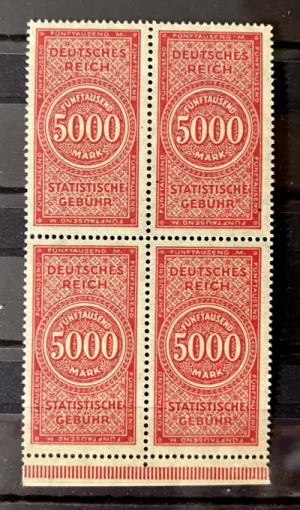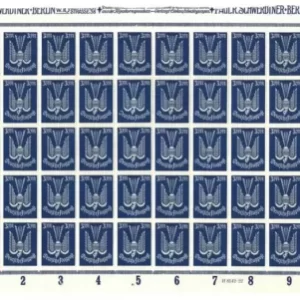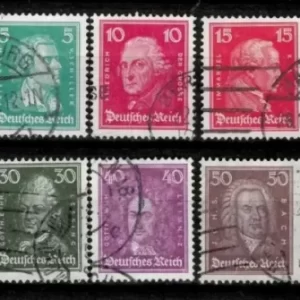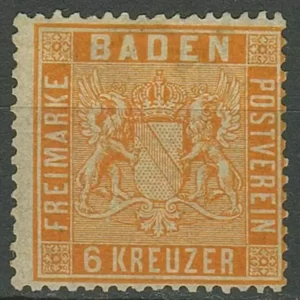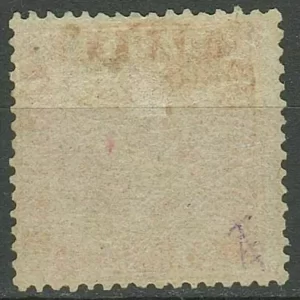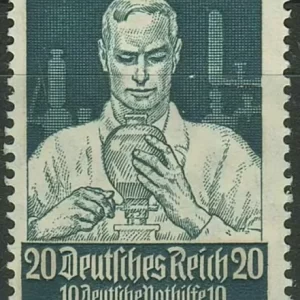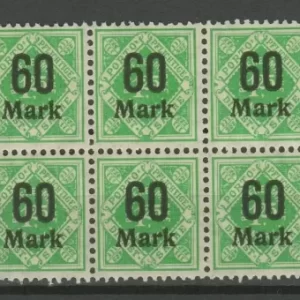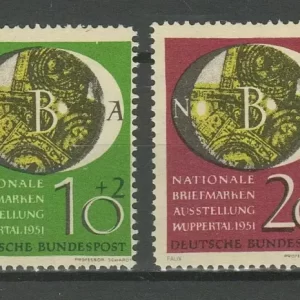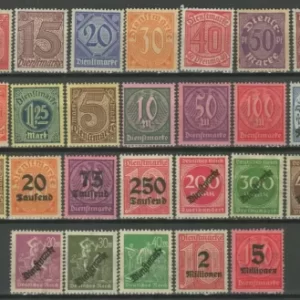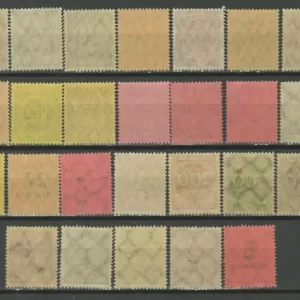The Deutsche Reich 1923 5000 Mark Revenue stamp, often referred to as “Statische Gebühr,” is a historical stamp issued in Germany during the hyperinflation period following World War I. Here’s an overview of its context and characteristics:
Historical Context
- Hyperinflation in Weimar Germany: Germany experienced severe economic difficulties in the early 1920s, culminating in hyperinflation in 1923. The value of the German Mark plummeted, leading to skyrocketing prices and the need for high-denomination currency and revenue stamps.
- Purpose of Revenue Stamps: Revenue stamps like the 5000 Mark “Statische Gebühr” were used to collect taxes and fees for various government services. They served as a form of fiscal receipt indicating that the required fees had been paid.
Characteristics of the 1923 5000 Mark Revenue Stamp
- Denomination: 5000 Marks, reflecting the extreme devaluation of currency at the time.
- Design: The design typically features intricate patterns and possibly the coat of arms or other national symbols of the Weimar Republic.
- Inscription: The term “Statische Gebühr” refers to “state fee,” indicating the stamp was used for governmental revenue purposes.
- Color and Printing: The stamps from this period often have distinctive colors and detailed engraving, which were used to prevent counterfeiting.
Collectibility and Value
- Condition: As with most stamps, the value of a 1923 5000 Mark revenue stamp depends on its condition. Factors include whether it is mint or used, any tears or fading, and the quality of the printing.
- Rarity: While these stamps were produced in large quantities due to the inflation, certain variants, errors, or exceptionally well-preserved examples can be more valuable.
- Historical Interest: Stamps from the hyperinflation period are of particular interest to collectors due to their historical significance and the dramatic economic conditions they represent.
Conclusion
The Deutsche Reich 1923 5000 Mark Revenue stamp is a fascinating piece of philatelic history, providing insight into the economic turmoil of post-World War I Germany. Its collectibility is influenced by its condition, rarity, and the broader historical narrative it represents. If you have one or are looking to acquire one, it’s advisable to consult with a philatelic expert or a specialized catalog to get a precise valuation.

